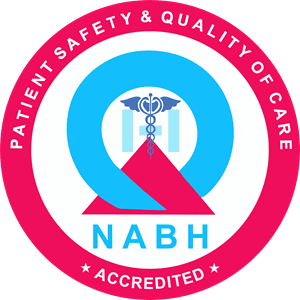Introduction
L5-S1 disc bulge is a common condition that affects the lower back, causing pain and discomfort. While surgical interventions are available, non-surgical injection-based treatments offer promising alternatives with fewer risks and quicker recovery. In this blog, we will explore the causes, etiopathogenesis, symptoms, investigations, and management of L5-S1 disc bulge, focusing on non-surgical injection-based therapies.
Causes and Etiopathogenesis
The L5-S1 disc bulge occurs when the soft, gel-like center (nucleus pulposus) of the intervertebral disc between the fifth lumbar (L5) and first sacral (S1) vertebrae protrudes or bulges outward. Several factors contribute to this condition, such as age-related degeneration, repetitive stress on the spine, poor posture, and lifting heavy objects incorrectly. These factors weaken the annulus fibrosus, the disc’s outer ring, making it susceptible to bulging and causing compression of nearby nerve roots.
Symptoms
Patients with an L5-S1 disc bulge often experience lower back pain, radiating pain down the leg (sciatica), numbness, tingling sensations, and weakness in the affected leg. The intensity of symptoms can vary from mild discomfort to severe debilitating pain, impacting daily activities and overall quality of life.
Investigations
To accurately diagnose L5-S1 disc bulge and rule out other conditions, various investigations are necessary. These may include:
Magnetic Resonance Imaging (MRI) : This imaging technique provides detailed images of the spine, allowing physicians to visualize the disc bulge and its impact on nearby structures.
X-rays : X-rays help assess the alignment and structure of the spine, ruling out fractures or other abnormalities.
Physical Examination : Neurological examinations and a thorough assessment of the patient’s symptoms aid in confirming the diagnosis.
Non-Surgical Injection-Based Treatments
Non-surgical injection-based treatments aim to alleviate pain, reduce inflammation, and promote healing without the need for invasive procedures. Some effective treatments include:
Epidural Steroid Injections (ESIs) : ESIs deliver corticosteroids directly into the epidural space surrounding the affected nerve root. This is carried out under fluoroscopy. These anti-inflammatory medications reduce nerve irritation and provide pain relief.
Facet Joint Injections : These injections target the small joints located on the posterior aspect of the spine. A combination of anesthetic agents and corticosteroids helps reduce pain and inflammation in the facet joints. This addresses the pain coming from the associated L5-S1 facet joint which might concomitantly coexist with the disc pathology.
Platelet-Rich Plasma (PRP) Therapy : PRP therapy involves injecting concentrated platelets from the patient’s blood into the affected area. The growth factors present in platelets promote tissue repair and reduce pain.
Prolotherapy : This treatment involves injecting a solution (often dextrose+ Local Anaesthetic) into the a ligaments supporting the lumbosacral segment, stimulating the body’s natural healing response.
AT ALLEVIATE
We tend to combine the the effects to reduce the pain and inflammation initially by image guided Transforaminal injection . This is usually followed by prolotherapy to the lower back in a month to strengthen the ligaments supporting the lumbosacral segment.
Laser Therapy: Non-invasive laser treatments can reduce inflammation and stimulate tissue repair in the affected area.
SURGICAL TREATMENT
For cases not responding to conservative means patients are subjected to Microdiscectomy or Endoscopic discectomy or Open Discectomy. Fusion surgery is also done in cases with degenerative disc disease affecting multiple levels.
Conclusion
L5-S1 disc bulge can cause considerable pain and discomfort, affecting daily life and functionality. Non-surgical injection-based treatments offer effective management options, reducing pain and inflammation while promoting natural healing. When considering treatment options, it’s essential to consult a qualified healthcare professional to determine the most suitable approach for individual cases.
References
- Lee JH, Choi SW, Kim JS, et al. The effectiveness of epidural steroid injection in patients with lumbar disc herniation: a prospective study. Pain Physician. 2013;16(3):185-195.
- Manchikanti L, Cash KA, Pampati V, et al. Lumbar facet joint nerve blocks in managing chronic facet joint pain: One-year follow-up of a randomized, double-blind controlled trial: Clinical trial NCT00355914. Pain Physician. 2008;11(2):121-132.
- Mei-Dan O, Carmont MR. The role of platelet-rich plasma in rotator cuff repair. Sports Med Arthrosc Rev. 2011;19(3):244-250.



